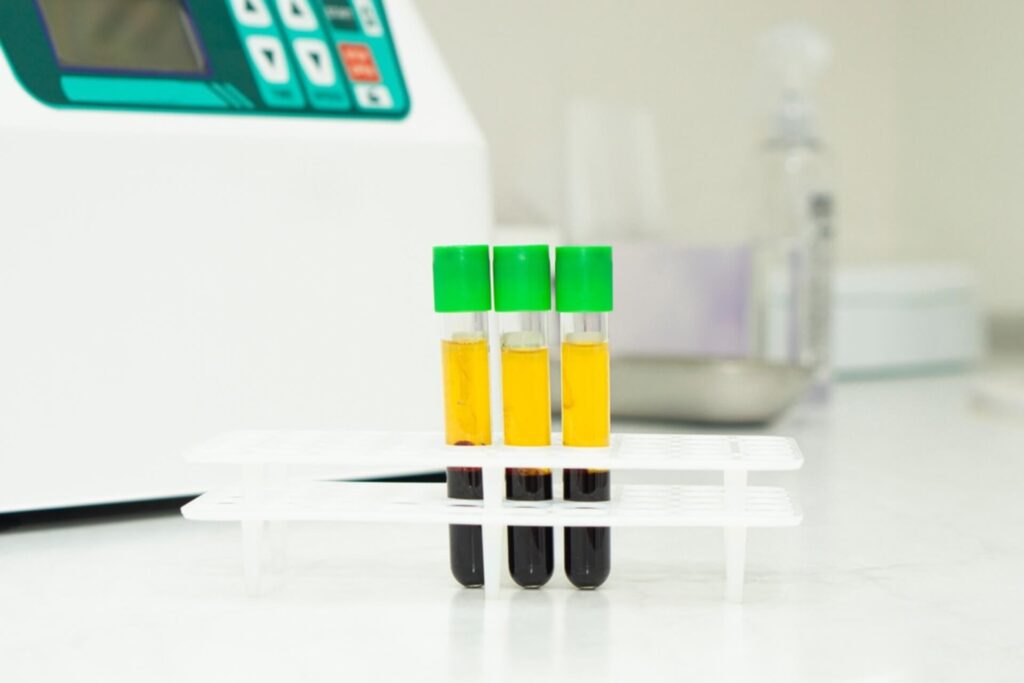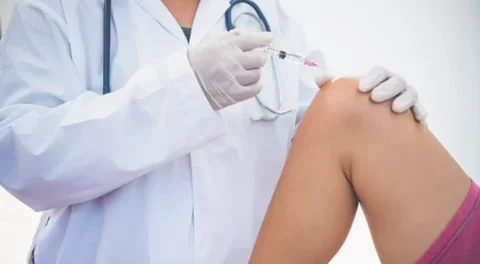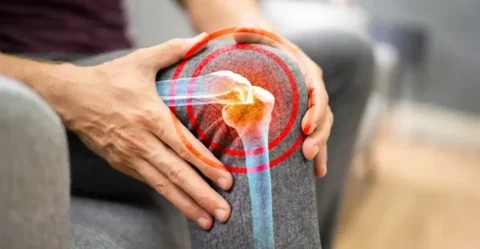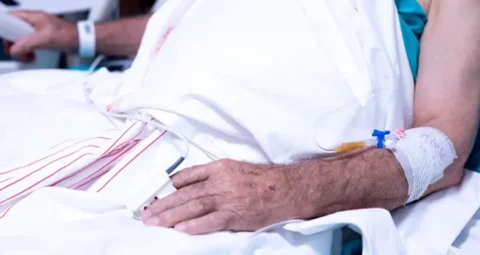Science has indeed brought innovations that bring comfort to our lives, including in the area of medicine. However, we should be cautious also about pseudoscience, in which products claim things that aren’t really supported by scientific research.
So is there scientific research supporting PRP treatment and hair growth? Yes, because platelet-rich plasma is a product of scientific research with clinical efficacy being studied. It’s a promising therapeutic tool. The role of platelet plasma has been elucidated in types of hair loss like androgenetic alopecia, although more research needs to be done in order to establish the standardization of its protocol.
Platelet-Rich Plasma: A New Technology Backed By Science
A study that followed the randomized placebo-controlled type of clinical trial has shown that administration of platelet-rich plasma into the follicular units is indeed effective in stimulating hair growth in patients with hair loss problems.
In this study, hair regrowth is compared between patients that received PRP injections and patients that received a placebo after 3 monthly treatments. These are observed with the help of computerized trichograms.
The study observed an increase in hair density, increase in hair count, and increase in epidermal thickness of the scalp injected with PRP.
As of writing, however, studies on the application of platelet-rich plasma treatment for hair growth still have conflicting results.
While some studies like the one described above have demonstrated a noticeable reduction in the rate of hair loss, some studies also claim that no clinical improvement was observed upon intralesional injection of platelet-rich plasma to patients with hair loss problems like pattern baldness or androgenetic alopecia or female pattern hair loss.
For example, a study has concluded that no statistically significant difference in hair count or hair mass index may be observed in the placebo control versus treatment groups in a double-blind, multicenter, placebo-controlled study. These patients reported a subjective improvement (i.e., they had an easier time styling their hair and they observed thicker hair) compared to placebo, though.
This discrepancy in the observed benefits (and lack thereof) of platelet-rich plasma stems from the lack of standardization of the protocols of PRP, from preparation to the dermatological treatment. It’s also due to this that PRP treatment is yet to receive approval from the U.S. Food and Drug Administration.
Further studies are needed for the standardization of this procedure and to determine the optimal concentration. This is so that patients with hair loss can experience the full benefits of PRP.
Results of Platelet-Rich Plasma For Hair Growth
Despite the observed efficacy of platelet-rich plasma treatment by some studies such as the one described above, it’s also important to note that it takes a while before the full effects can be observed. It takes around 6 months before visible hair regrowth is observable or 3 to 6 treatment sessions spaced at 5 to 6 weeks.
Moreover, the results of the PRP treatment also aren’t permanent. A patient with hair loss will need to schedule biannual maintenance sessions to maintain the active hair growth observed in the target area.
Platelet-Rich Plasma and Its Different Classification Systems

Platelet-rich plasma protocols are yet to be standardized. In an attempt to initiate its standardization, several authors have proposed ways to classify platelet-rich plasma. This is in order for the studies regarding its efficacy to be more easily interpreted and compared.
These classifications include Mishra et al.‘s classification based on the available PRP systems in 2006, Dohan Ehrenfest et al.‘s classification based on the presence of individual components and fibrin architecture, and Magalon et al.‘s DEPA classification.
1) Classification Based On The Available PRP Systems in 2006
Available PRP systems in 2006, which include buffy coat and single-spin suspension, are used by the authors of a systematic review to classify platelet-rich plasma. They made a classification based on:
- whether or not white blood cells are present in the formulation
- ways that PRP is activated
- coefficient (or numerical value) comparing the increase in leukocyte and platelet concentrations to the baseline values which is the whole blood preparation
2) Classification Based On The Presence of Individual Components and Fibrin Architecture
In another literature review, the authors classified the then available platelet-rich plasma preparations into four categories depending on their leukocyte and fibrin content. In this way, they attempt to help address the successes and failures previously committed regarding PRP and also provide an objective approach that can give the framework for future improvements in PRP preparation.
- Pure PRP or Leukocyte-Poor PRP (P-PRP) – P-PRP includes preparations in which the final product results in a formulation without white blood cells and, when activated, has a low-density fibrin network. Protocols that obtain this type of PRP include plasmapheresis with a laboratory cell separator, Vivostat PRF, and Anitua’s plasma rich in growth factors.
- Leukocyte and PRP (L-PRP) – L-PRP also has a low-density fibrin network upon activation but, unlike P-PRP, contains white blood cells. Protocols that obtain this type of PRP include Curasan, Friadent-Schutze, Regen, Plateltex, SmartPReP, PCCS, GPS, and Magellan.
- Pure Platelet-Rich Fibrin (P-PRF) – P-PRF includes preparations in which the final product has no white blood cells and, upon activation, has a high-density fibrin network. It can’t be injected and instead is present in gel form, with the optimum concentration of platelet gel still being studied. The Fibrinet PRFM kit by Cascade Medical is the only protocol that produces this type of PRP.
- Leukocyte and Platelet-Rich Fibrin Network After Activation (L-PRF) – L-PRF includes preparations containing white blood cells and a high-density fibrin network. The protocol that produces this type of PRP is Choukroun’s PRF protocol.
3) DEPA (Dose/Efficiency/Purity/Activation) Classification
Because the previous 2 classifications described didn’t put into consideration how many red blood cells are present in the formulation, the volume with which PRP is prepared, and the final volume to which the platelets will be injected, another classification is proposed.
Called the DEPA classification, this classification is based on 4 components, namely:
- Dose of injected platelets – The injected dose is measured in billions or millions of platelets. It’s computed by obtaining the value of the platelet count in PRP and the obtained volume of PRP and multiplying these 2 values.
- Efficiency of production – The second criterion for the DEPA classification entails determining how efficient the protocol is in obtaining PRP. It’s measured in platelet recovery rate, otherwise known as the platelet capture efficiency.
- Purity of the PRP obtained – Purity of the PRP obtained refers to the relative composition of the blood components (platelets, white blood cells, and red blood cells) present in the PRP produced. It’s measured by comparing the number of platelets versus the number of white blood cells and red blood cells present in the PRP.
- Activation process – The final criterion for the DEPA classification entails whether or not an exogenous clotting factor is added for the activation of platelets. Typical clotting factors used for platelet activation in PRP include autologous thrombin, calcium chloride, and calcium gluconate.
It’s a scoring system following the previously described components, and categorized as follows:
| Dose of injected platelets (billions) | A (>5, very high dose)B (3-5, high dose)C (1-3, medium-dose)D (<1, low dose) |
| Efficiency of the process (platelet recovery rate %) | A (>90, high)B (70-90, medium)C (30-70, low)D (<30, poor) |
| Purity of the PRP (relative composition in platelets %) | A (>90, very pure PRP)B (70-90, pure PRP)C (30-70, heterogenous PRP)D (<30, whole blood PRP) |
Preparation of Platelet-Rich Plasma
While different protocols exist for the preparation of platelet-rich plasma, a general procedure may still be mentioned as all of these procedures employ the same principle despite the difference in specificities (i.e., they differ in the way they collect and concentrate platelets and in the centrifugation times).
Preparation of platelet-rich plasma starts with the collection of blood from the patient through medical devices like a syringe filled with anticoagulants that will then be transferred to a secondary device or a tube with anticoagulants that will directly be subjected to centrifugation. Typical anticoagulants used are thrombin and calcium chloride.
This collected blood will then be subjected to centrifugation (either single-spin or double-spin), producing 3 layers of blood components separated by the difference in their densities. The top layer will be the platelet-poor plasma which is then removed, followed by the platelet-rich plasma which is then collected.
Treatment Protocol for Platelet-Rich Plasma
A study proposing a treatment protocol for the administration of platelet-rich plasma suggested PRP to only be a complementary treatment for hair loss, as it can’t target the genetic component of some hair loss disorders like androgenetic alopecia. The authors of this study suggest the continuation of the application of topical minoxidil or the intake of oral medications like spironolactone and finasteride.
These authors suggest subcutaneous injections of platelet-rich plasma into skin flaps as the way of administration of PRP, with activator treatment done before its administration. They also suggest monthly sessions for the first 3 months, followed by sessions every 3 months for the first year (i.e., treatment sessions should be done at months 1, 2, 3, 6, 9, and 12).
How Platelet-Rich Plasma Treatment Works For Hair Growth

Platelet-rich plasma employs the principle of increasing the concentration of platelets in plasma (i.e., platelet enrichment) which releases the growth factors similar to the ones normally released by the cultured dermal papilla cells of the hair follicles.
In doing so, the growth factors necessary for the prolongation of anagen hairs are increased in concentration. Some of these growth factors implicated in this effect include:
- Platelet-derived growth factor (PDGF) – PDGF works by promoting vascularization through the stimulation of angiogenesis (the formation of new blood vessels). This works in increasing hair growth by promoting good blood flow to the scalp, therefore providing the oxygen and nutrients necessary for hair growth.
- Vascular endothelial growth factor (VEGF) – VEGF, like PDGF, also works in hair growth by increasing the angiogenic potential of the vessels around hair follicles (perifollicular angiogenesis). It also increases the perifollicular vessel size during anagen phase.
- Fibroblast growth factor (FGF) – FGF induces anagen phase, promotes the proliferation of dermal papilla cells, and increases the hair follicular size. It’s also a known angiogenesis stimulator.
Safety of Platelet-Rich Plasma for Hair Growth
There are no major side effects reported on the PRP-treated scalp, especially because it’s minimally invasive. The risk of manifesting allergic reactions and contracting communicable diseases is minimized because it’s taken from the own blood components of the patient.
Side effects of platelet-rich plasma injections may mostly be attributed to the manner of its administration, in that patients may experience mild redness, pain, swelling, and bruises as inflammatory reactions at the injection site.
Infection may also occur, although rarely, if aseptic procedures aren’t followed while PRP is prepared and injected. Nerve and tissue injuries may also be side effects, although they may be avoided if the healthcare provider is highly skilled in doing PRP injections.
Platelet-rich plasma also should be avoided by patients with a known medical history of other medical conditions like low platelet count (critical thrombocytopenia), acute and chronic infections, and use of anticoagulation therapy.
PEP Factor: A High-Quality Formulation for Your Hair Growth Needs
Another scientifically-backed formulation is FACE Med Store’s PEP Factor, a high-quality product made of carefully selected natural and nourishing ingredients. Its topical application and absence of harsh chemicals make it a safe product to be used on its own or in combination with other treatments that can help improve the appearance of progressive hair loss like platelet-rich plasma and microneedling.
The active ingredients of the PEP Factor are basic fibroblast growth factor (bFGF) and copper peptide, with effects that can effectively complement the effects of platelet-rich plasma. The basic fibroblast growth factor is capable of stimulating cell proliferation like the platelet plasma growth factors. On the other hand, copper peptide is a good antioxidant that can combat oxidative stress that can exacerbate hair loss.
Get High-Quality Formulations, Medical Supplies, and More At FACE Med Store
Platelet-rich plasma injection on pattern hair loss is an evidence-based treatment that can aid patients with hair loss and bring a clinical improvement in hair loss. It helps hair regrowth by promoting and stimulating factors that are essential to the human hair growth cycle. Being minimally invasive, it’s a good alternative for hair transplantation, especially for those who prefer not to go under the knife.
At FACE Med Store, we offer high-quality formulations and medical supplies that can support the efficacy of the platelet-rich plasma and other treatments that can bring improvements to a patient’s hair thickness. We’re committed to helping our clients achieve the optimum benefits of their procedure. Contact us today at info@facemedstore.com for more information regarding our high-quality products.






